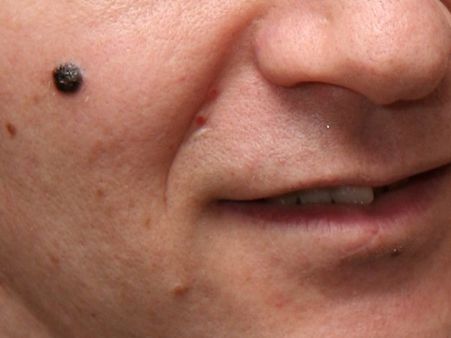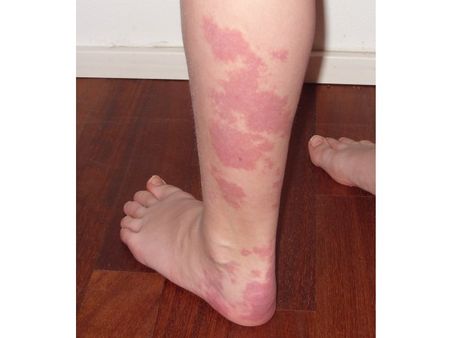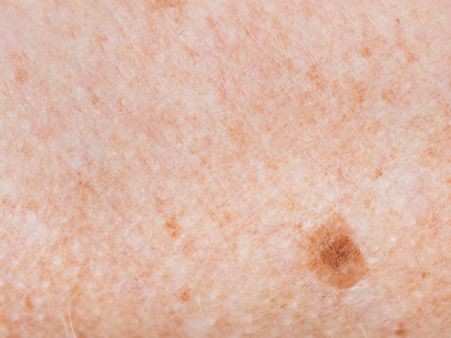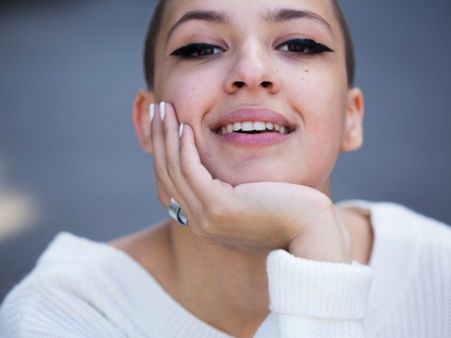Just In
- 3 hrs ago

- 5 hrs ago

- 6 hrs ago

- 8 hrs ago

Don't Miss
- Education
 KCET 2024: Candidates can raise objections against questions in UGCET, Know more
KCET 2024: Candidates can raise objections against questions in UGCET, Know more - News
 TS Inter Results 2024 Manabadi: 1st And 2nd Year Results Expected Soon
TS Inter Results 2024 Manabadi: 1st And 2nd Year Results Expected Soon - Sports
 IPL 2024: Gautam Gambhir Always Knew Sunil Narine Would Become A T20 Legend
IPL 2024: Gautam Gambhir Always Knew Sunil Narine Would Become A T20 Legend - Movies
 Aavesham OTT Rights: Fahadh Faasil's Latest Action Comedy By Jithu Madhavan Closes A Crazy Deal
Aavesham OTT Rights: Fahadh Faasil's Latest Action Comedy By Jithu Madhavan Closes A Crazy Deal - Finance
 Elon Musk Postpones India Trip, Tesla's Indian Market Entry Delayed
Elon Musk Postpones India Trip, Tesla's Indian Market Entry Delayed - Technology
 Best Noise-Cancelling Earbuds Under Rs 5,000: CMF Buds Pro, Redmi Buds 5, Realme Buds Air 5, and More
Best Noise-Cancelling Earbuds Under Rs 5,000: CMF Buds Pro, Redmi Buds 5, Realme Buds Air 5, and More - Automobiles
 Tesla CEO Elon Musk's Much-Awaited Visit to India Deferred, Leaving Questions Unanswered
Tesla CEO Elon Musk's Much-Awaited Visit to India Deferred, Leaving Questions Unanswered - Travel
 Journey From Delhi To Ooty: Top Transport Options And Attractions
Journey From Delhi To Ooty: Top Transport Options And Attractions
Do You Have A Birthmark? It May Be An Indication Of Underlying Medical Problem
You may be common to the sayings such as if you have a birthmark on the jaw, it shows that one will have poor health and a bad lifestyle or a birthmark on the back mean that you are truthful and open-minded.
With superstitions and myths surrounding the cause or placement of birthmarks on your body, there are actual scientific explanations behind these. Birthmarks are a common type of blemishes found on the surface of the skin [1]. These are usually noticeable at birth or shortly afterwards.

Birthmarks are usually not a risk to your health and are noncancerous. You can develop a birthmark anywhere on the body or face [2]. They vary in colour, appearance, size and shape, and some are permanent and may get larger over time, while others fade away completely.
Very few birthmarks cause significant medical problems. This article will help you understand the different types of birthmarks and help you recognize your birthmark(s).

What Causes Birthmarks?
Let us keep the myths aside and look into the ‘real' reason as to why and how we have birthmarks. First things first, health experts and researchers do not fully understand why some babies have birthmarks and others do not. However, different groups assimilate the following to the reasons as to why one may have a birthmark.
- Genetics: Certain birthmarks are hereditary and run in families but most are not [3]. In rare cases, birthmarks are caused by gene mutations [4].
- Cells: Some studies have pointed out that a buildup of cells that line the blood vessels of infants may cause birthmarks to occur [5].
- Placenta: Health experts claim that a tiny piece of a placenta may become lodged inside the developing embryo very early on in the pregnancy, resulting in the development of birthmarks [6]. Some studies claim that some proteins produced by the placenta during pregnancy may be linked to the birthmarks [7].
- Nerve damage: There is also a possibility that birthmarks can develop if any damage occurs to the nerves that control the widening or narrowing of capillaries [8].


What Are The Types Of Birthmarks?
Many birthmarks fall into one of two categories, vascular birthmarks and pigmented birthmarks [9].

1. Vascular birthmarks
These types of birthmarks develop when extra blood vessels clump together to form a cluster on the skin. Vascular birthmarks develop in almost 40 per cent of newborns.
- Hemangiomas: These appear pink, blue, or bright red in colour and are found on the head or neck [10]. Hemangiomas usually start out small in size and flat in shape and grow during the first few months of a baby's life. In most cases, these birthmarks fade away when the child reaches adolescence and may leave a pale mark [11].
- Port-wine stains (nevus flammeus): These are caused by abnormal formation of small blood vessels under the skin and can occur anywhere on the body (usually on the face and neck). These birthmarks are named after the colour it has, a pink or red which then turns dark red or purple [12]. Port-wine stains do not fade over time and may become darker if left untreated. In rare conditions, these types of birthmarks may be associated with genetic conditions [13][14].
- Salmon patches: Also referred to as angel kisses or stork bites, these type of birthmarks are found in the area between eyes, on eyelids, or on the back of the neck. Salmon patches are caused by clusters of small blood vessels under the skin and do not require medical attention [15].


2. Pigmented birthmarks
These type of birthmarks develop when you have more pigment in one part of your skin than in other parts.
- Mongolian blue spots: They are flat shaped and bluish-grey spots which occur in people with naturally dark skin [16]. Mongolian spots typically occur on the lower back and buttocks and completely fade away by the age of four [17]. They are not harmful and can be mistaken for bruises.
- Moles (congenital nevi): Moles can occur anywhere on your face or body and are one of the most common types of birthmarks [18]. Moles are typically round in shape and range in colour from pink to light brown or black. Any change in the shape, size or the colour of the mole may be linked to skin cancer [19].
- Café au lait spots: These are oval in shape and are pale brown in colour. Café au lait spots may occur at any time from birth through early childhood and become larger in size but often fade [20]. If a child has numerous of these birthmarks, they may also have a rare medical condition, called neurofibromatosis - a genetic disorder that causes tumours to develop in the brain, spinal cord, and nerves due to gene abnormality [21][22].

What Are The Complications Of Birthmarks?
Mostly, birthmarks pose no long term health problems and face away with time. However, that does not mean that birthmarks are completely harmless [23].
- Hemangiomas may turn into an open sore and develop an infection.
- People with congenital nevi are at the risk (5 to 10 per cent) of developing melanoma, an aggressive skin cancer.
- If a port-wine stain develops around the eye, the risk of developing glaucoma is high.
- A child with a hemangioma on the eyelids will require regular treatment to avoid the risk of vision problems worsening [24].
- In some cases, port-wine stains can occur due to Sturge-Weber syndrome, a condition of the blood vessels that affects the eyes, brain, and skin [25].

How Are Birthmarks Treated?
The main treatment for birthmarks is that they are removed. Most birthmarks are harmless and fade away without treatment. However, health experts point out that, if the birthmark causes health problems, it is better to get it removed [26].
For some people, the birthmarks such as that on the face may cause and uneasiness due to its appearance and birthmarks, such as hemangiomas or moles, may lead to an increased risk for certain medical conditions, such as skin cancer - which should be monitored by a dermatologist. The treatment options depend on several factors, including the type, location, and severity of the birthmark.
The treatments followed or techniques used in the removal of birthmarks are as follows:
- Corticosteroids: Anti-inflammatory medications that can be taken orally or injected directly into birthmarks. These help by working directly on the blood vessels, helping to shrink the size of the birthmark [27].
- Laser therapy: This can help remove or significantly lighten port-wine stains, with the help of highly concentrated pulsing beams of light [28]. Laser therapy may be most successful when it's started in infancy and one will require to follow-up for regular laser sitting. It is natural to develop temporary bruising or swelling [29].
- Surgery: Some birthmarks can be treated through surgical removals, such as very deep hemangiomas that can damage the healthy tissue surrounding them and moles [30]. If the birthmark is small, the doctor will use a small scalpel to remove the birthmark and if the mark is big, it may be removed in sections over the course of several appointments.


On A Final Note…
Now you know that your birthmark is not a result of your mother failing to eat certain something while she was pregnant with you. Most people get their birthmarks removed, however, keep in mind that treatment can sometimes be painful, and it is not always effective.
So, unless the birthmark is interfering with your sight, feeding, hearing, or breathing, it is best to let it stay on your skin.
-
 disorders cureIs Hyperpigmentation A Serious Skin Condition? Know About The Causes, Treatments and Prevention
disorders cureIs Hyperpigmentation A Serious Skin Condition? Know About The Causes, Treatments and Prevention -
 beauty7 Simple Skincare Hacks Tailored For The Busy You To Get Effortless Radiance
beauty7 Simple Skincare Hacks Tailored For The Busy You To Get Effortless Radiance -
 beauty6 Korean Beauty Tricks To Add To Your Skincare For The Ultimate Glass Skin
beauty6 Korean Beauty Tricks To Add To Your Skincare For The Ultimate Glass Skin -
 healthWhat Are Demodex Mites? These 8-Legged Creatures Live Under Skin And May Give You Creepy Vibes
healthWhat Are Demodex Mites? These 8-Legged Creatures Live Under Skin And May Give You Creepy Vibes -
 healthWhy Can't We Resist Popping Pimples? Let's Find Out Why We Derive So Much Pleasure From Them!
healthWhy Can't We Resist Popping Pimples? Let's Find Out Why We Derive So Much Pleasure From Them! -
 beautyDo This Skin Toning Trick Everyday To Get Rid Of Double Chin
beautyDo This Skin Toning Trick Everyday To Get Rid Of Double Chin -
 beautyWet Towel Face Wiping For Acne: A Simple And Affordable Solution For Glowing Skin
beautyWet Towel Face Wiping For Acne: A Simple And Affordable Solution For Glowing Skin -
 beauty3 Simple Home Remedies For Peeling Skin Around Nails That Are Magic!
beauty3 Simple Home Remedies For Peeling Skin Around Nails That Are Magic! -
 healthUnveil the Amazing Health Perks of Eating Mangoes!
healthUnveil the Amazing Health Perks of Eating Mangoes! -
 healthWhat Are The Best Foods To Include In My Diet For Healthy, Glowing Skin?
healthWhat Are The Best Foods To Include In My Diet For Healthy, Glowing Skin? -
 beautyNon-Alcoholic Wine: Your Key To Age-Defying Skin
beautyNon-Alcoholic Wine: Your Key To Age-Defying Skin -
 beautyReduce Cellulite With Ease: Home Remedies You Need To Try Today
beautyReduce Cellulite With Ease: Home Remedies You Need To Try Today


 Click it and Unblock the Notifications
Click it and Unblock the Notifications




